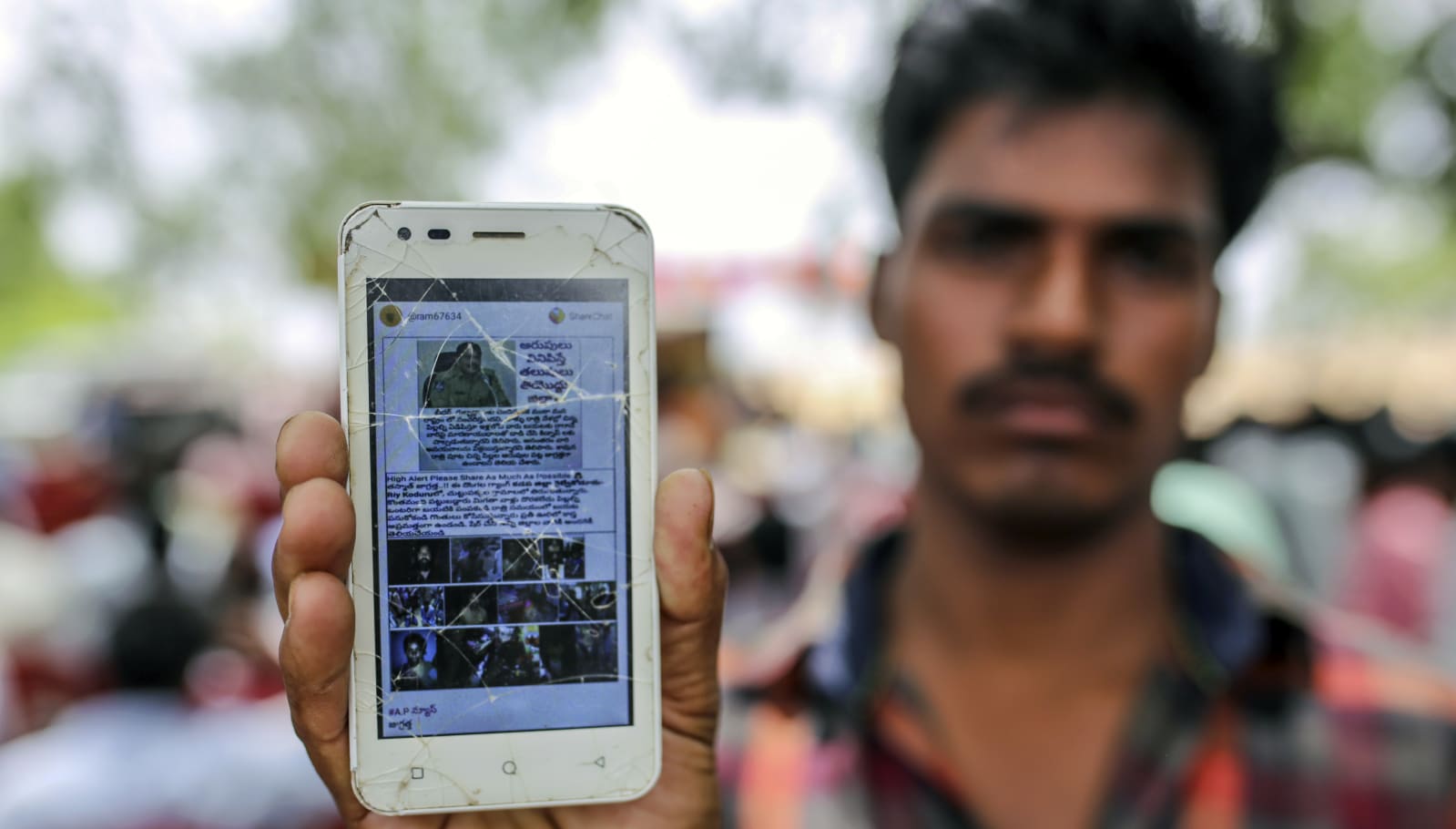Posts Tagged: reduce
ViXion01 glasses reduce eyestrain by doing the focusing for you
CES is the type of show where one is likely to come across all sorts of dorky, Geordi La Forge-esque smart glasses, but some do manage to include some practical features — like ViXion's auto-focus eyewear. The company, which is a spin-off of Japanese optics specialist Hoya, showed off its the ViXion01, at CES 2024, and it's aimed at people who struggle to focus their eyes due to strain, old age or the time of day. After a quick demo, I could also see myself benefitting from it on a daily basis. I even dig the futuristic look on these glasses, which are the work of Japanese design firm, Nendo.
At the heart of the ViXion01 is its front-facing ToF (time of flight) sensor, which lets it measure the distance of your target object and quickly adjust its lenses on the go. The basic concept is similar to a University of Utah prototype that popped up at CES 2017, but ViXion managed to miniaturize and even begin to commercialize it. According to project director Toshiharu Uchiumi, his device will do wonders to enhance fine details in applications like model kit assembly or reading small print.
Initial setup was straightforward. I had to first manually slide both lenses to get a single centered image, then I moved on to the diopter adjustment dial on the right to bring each of my eyeballs into focus, which worked fine despite my myopia of around -4.5 D (you can also set this up in the app via Bluetooth 5.0 connectivity). While the ViXion01 weighs 50 grams, the main circuitry and battery housed on the right made an apparent imbalance, but I didn't have enough time to tweak my fit on the bendable left arm and nose pads.
Otherwise, it was a surprisingly pleasant experience, visual-wise. My eyesight was sharper than usual for both far and close distances (down to two inches), and I didn't feel as much eyestrain as I would usually get when looking at things up close — seemingly ideal for when I work on my Gundam models. The automatic switch between different focal distances felt swift and seamless as well.
There are some caveats, though. First off, ViXion stresses that this is not a medical device, and you should avoid wearing it while driving or exercising — makes sense given the limited field of view due to the black rings housing the lenses. With that in mind, the 10-hour battery life should be sufficient, and then it's a three-hour charge via USB-C. It's also not waterproof, though it is rated IPX3 for water resistance, which can probably tolerate light rain or sweat.
The ViXion01 is now available for pre-order in Japan for 99,000 yen (about $ 690), with shipments expected to begin in February. There's no plan on an overseas launch just yet, but if that ever happens, chances are ViXion will need to come up with a wider version, anyway.
We're reporting live from CES 2024 in Las Vegas from January 6-12. Keep up with all the latest news from the show here.
This article originally appeared on Engadget at https://www.engadget.com/vixion01-glasses-reduce-eyestrain-by-doing-the-focusing-for-you-205106281.html?src=rss
Engadget is a web magazine with obsessive daily coverage of everything new in gadgets and consumer electronics
Personalized warnings could reduce hate speech on Twitter, researchers say
A set of carefully-worded warnings directed to the right accounts could help reduce the amount of hate on Twitter. That’s the conclusion of new research examining whether targeted warnings could reduce hate speech on the platform.
Researchers at New York University’s Center for Social Media and Politics found that personalized warnings alerting Twitter users to the consequences of their behavior reduced the number of tweets with hateful language a week after. While more study is needed, the experiment suggests that there is a “potential path forward for platforms seeking to reduce the use of hateful language by users,” according to Mustafa Mikdat Yildirim, the lead author of the paper.
In the experiment, researchers identified accounts at risk of being suspended for breaking Twitter’s rules against hate speech. They looked for people who had used at least one word contained in “hateful language dictionaries” over the previous week, who also followed at least one account that had recently been suspended after using such language.
From there, the researchers created test accounts with personas such as “hate speech warner,” and used the accounts to tweet warnings at these individuals. They tested out several variations, but all had roughly the same message: that using hate speech put them at risk of being suspended, and that it had already happened to someone they follow.
“The user @account you follow was suspended, and I suspect this was because of hateful language,” reads one sample message shared in the paper. “If you continue to use hate speech, you might get suspended temporarily.” In another variation, the account doing the warning identified themselves as a professional researcher, while also letting the person know they were at risk of being suspended. “We tried to be as credible and convincing as possible,” Yildirim tells Engadget.
The researchers found that the warnings were effective, at least in the short term. “Our results show that only one warning tweet sent by an account with no more than 100 followers can decrease the ratio of tweets with hateful language by up to 10%,” the authors write. Interestingly, they found that messages that were “more politely phrased” led to even greater declines, with a decrease of up to 20 percent. “We tried to increase the politeness of our message by basically starting our warning by saying that ‘oh, we respect your right to free speech, but on the other hand keep in mind that your hate speech might harm others,’” Yildirim says.
In the paper, Yildirim and his co-authors note that their test accounts only had around 100 followers each, and that they weren’t associated with an authoritative entity. But if the same type of warnings were to come from Twitter itself, or an NGO or other organization, then the warnings may be even more useful. “The thing that we learned from this experiment is that the real mechanism at play could be the fact that we actually let these people know that there's some account, or some entity, that is watching and monitoring their behavior,” Yildirim says. “The fact that their use of hate speech is seen by someone else could be the most important factor that led these people to decrease their hate speech.”
US Department of Energy wants to dramatically reduce the cost of carbon capture technology
The US Department of Energy wants to accelerate the development of carbon capture technology. On Friday, the agency announced a program called Carbon Negative Shot. Part of its Energy Earthshots initiative, the goal here is to foster the development of carbon capture technology that can sequester CO2 at a cost of less than $ 100 per ton, and can be deployed at the gigaton scale. To put that in perspective, that much carbon is equivalent to the annual emissions of approximately 250 million cars.
“By slashing the costs and accelerating the deployment of carbon dioxide removal — a crucial clean energy technology — we can take massive amounts of carbon pollution directly from the air and combat the climate crisis,” said Secretary of Energy Jennifer M. Granholm. “With our Carbon Negative Shot, we can help remove the greenhouse gases already warming our planet and affecting our health — positioning America as a net-zero leader and creating good-paying jobs for a transitioning clean energy workforce.”
If it wasn’t clear already, the Energy Department has set an ambitious target. In September, Orca, the largest direct carbon capture facility ever, opened in Iceland. The plant will capture 4,000 tons of CO2 per year at a cost of about $ 600 per ton for bulk purchases. Chimeworks, the company that operates Orca, aims to reduce the cost to $ 300 or less per ton by 2030. That’s a long way away from the Energy Department’s goal of less than $ 100 per ton, but sustained and substantial support and investment from the government is exactly what could make that happen.
Fitbit Premium’s new Calm integration promises to help reduce stress and improve sleep
Fitbit brings new features to Premium subscribers including the Calm app, snore detection, and stress tracking.
Android | Digital Trends
NFL tech competition winners reduce concussions and heal with light

Engadget RSS Feed
WhatsApp clamps down on forwarding to reduce hoaxes and spam

Engadget RSS Feed
Unlimited plans reduce time spent on WiFi in the U.S.
Over the last few years, one of the trends we saw were attempts to expand the number of WiFi hotspots accessible by general consumers. Much of this was driven by a concern over limited support for the growing number of wireless devices. For consumers, it was a way to preserve their pot of data available […]
Come comment on this article: Unlimited plans reduce time spent on WiFi in the U.S.
